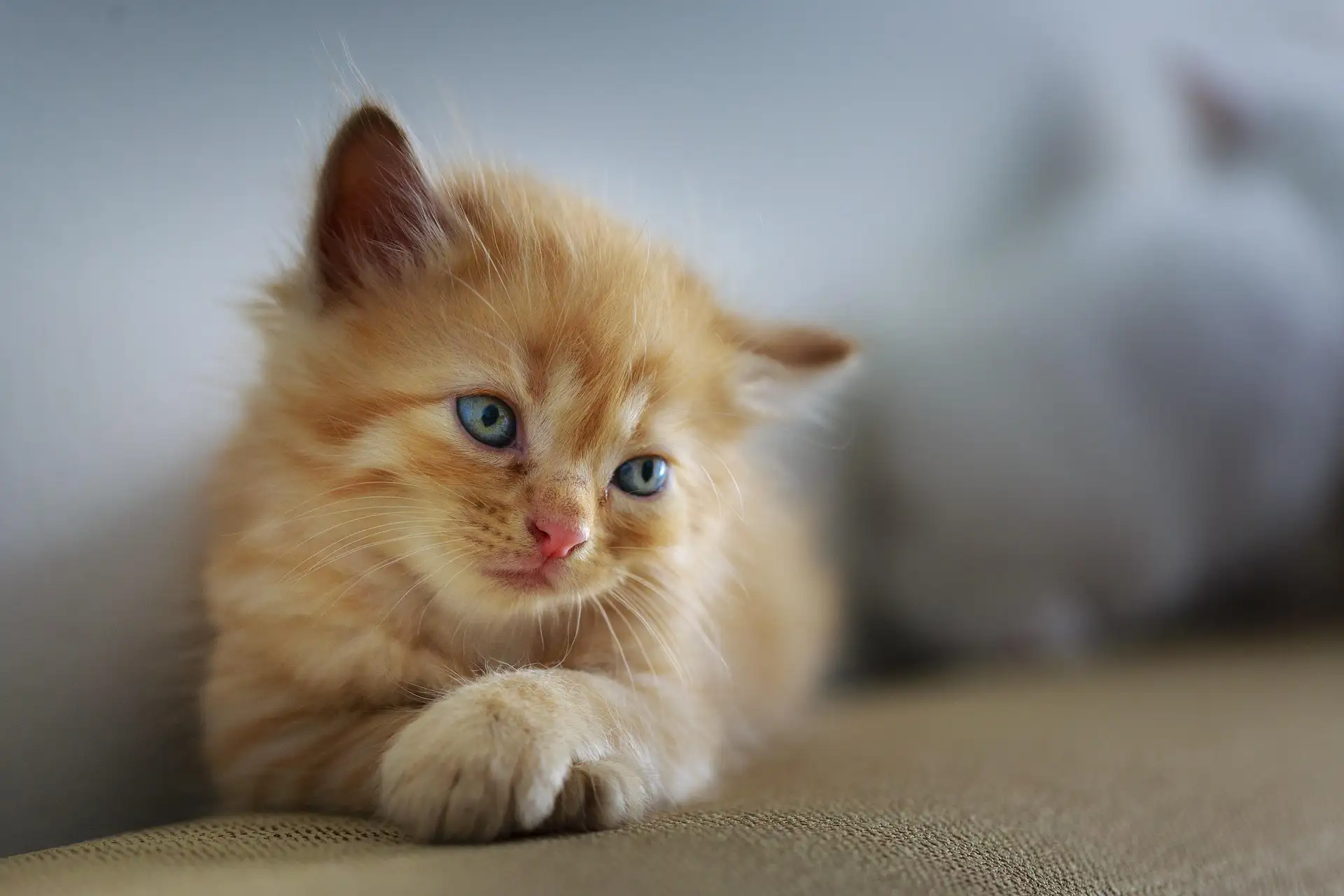Bringing a new cat into your home marks the beginning of an exciting journey. However, if you already have a kitty, your resident feline may not be as happy as you are. The success of this transition depends heavily on your approach during the first few weeks of integration.
A rushed introduction can create lasting tension between pets and potentially lead to behavioral issues. Your new feline friend needs time to adjust to unfamiliar surroundings, smells, and companions. Research shows that cats experience significant stress during environmental changes, affecting their physical and emotional well-being.
A local Bowmanville, ON vet offers some insight on this below.
Key factors for a successful introduction:
- Create a calm, controlled environment
- Follow your cats’ natural pace
- Respect territorial boundaries
- Watch for stress signals
- Maintain existing pets’ routines
The introduction process varies for each household. Some cats might adapt within days, while others need several weeks or months. Your patience during this period directly impacts the long-term harmony of your pet family.
Think of cat introductions like a careful dance – each step builds upon the previous one. A methodical approach helps prevent common issues such as:
- Territory marking
- Aggressive behavior
- Hiding or withdrawal
- Appetite changes
- Litter box avoidance
Your commitment to a gradual introduction process sets the foundation for lasting friendships between your pets and creates a peaceful home environment for everyone involved.
Preparing a Safe Space for the New Cat
Creating a dedicated safe space helps your new cat adjust to their surroundings with minimal stress. A spare bedroom or home office serves as an ideal sanctuary for your new feline friend.
Essential Items for Your Cat’s Safe Space:
- A clean litter box placed away from feeding areas
- Fresh water and food bowls
- Comfortable bedding or cat bed
- Scratching post
- Interactive toys
- Hidden spots for retreat (boxes, cat caves)
Setting Up the Quiet Room:
- Remove hazardous items like loose wires, toxic plants, or fragile objects
- Block small spaces where cats might get stuck
- Keep windows securely closed or screened
- Maintain room temperature between 65-75°F
Your cat’s safe room should limit exposure to household noise and traffic. Consider using soft lighting and playing calming music to create a peaceful atmosphere. Place food and water bowls away from walls – cats prefer to see their surroundings while eating.
Creating Comfort Zones:
Set up elevated spaces like window perches or cat trees where your cat can observe their environment safely. Add familiar scents by including items from their previous home or using calming pheromone diffusers. Keep the door closed during initial days, allowing your cat to explore and claim their territory at their own pace.
Click
here for information on pheromone diffusers from PetMD.
Scent Swapping and Initial Interactions
Cats rely heavily on scent recognition to establish relationships. Start the introduction process by exchanging bedding between your resident cat and the newcomer. Place your existing cat’s blanket or bed in the new cat’s safe room, and vice versa. This allows each cat to become familiar with the other’s scent in a non-threatening way.
Effective Scent Swapping Techniques:
- Rub a soft cloth gently around each cat’s cheeks to collect their facial pheromones
- Exchange their food bowls during meal times
- Switch their sleeping spots daily
- Place treats near the door of the safe room for both cats
Visual Introduction Steps:
- Create a small gap in the door (1-2 inches)
- Use a baby gate wrapped in a sheet – gradually remove sections
- Place both cats at opposite ends of a room with supervision
Watch for these positive body language signs:
- Relaxed whiskers and ears
- Slow blinking
- Calm tail movements
- Showing interest without hissing
Negative signals requiring immediate separation:
- Flattened ears
- Growling or hissing
- Tail puffing
- Aggressive stalking
Keep initial visual interactions brief – 5-10 minutes. Increase duration as both cats display comfortable body language. Reward calm behavior with treats and praise. If either cat shows stress signals, return to scent swapping for additional days.
Introducing Cats to Each Other
Direct interaction between cats marks a crucial milestone in the introduction process. After successful scent swapping, you can begin supervised face-to-face meetings in a neutral space of your home.
Signs of Stress or Aggression to Watch For:
- Flattened ears
- Dilated pupils
- Raised fur along the back
- Growling or hissing
- Tail puffed up or twitching
- Crouching or hiding
Start these meetings in short 10-15 minute sessions. Place each cat at opposite ends of the room and let them approach each other at their own pace. Keep treats handy to reward calm behavior.
Effective Intervention Techniques:
- Distract with toys or treats
- Create physical barriers using furniture
- Use a water spray bottle as a last resort
- Separate cats immediately if fighting occurs
If tension arises, redirect their attention using interactive toys like wand teasers or laser pointers. This creates positive associations with being in each other’s presence. The Nine Lives Foundation has some insight on that, which you can read
here.
Some cats might need multiple short sessions spread across several days or weeks. Each cat should have access to separate resources – food bowls, litter boxes, and resting spots – to prevent territorial disputes. PetMD has an article that that offers insight on that
here.
A successful introduction shows both cats displaying relaxed body language: soft eyes, forward-pointing ears, and casual grooming behavior in each other’s presence.
Additionally, providing cat enrichment for bored cats can help ease the transition and make the introduction process smoother.
Dog Introduction Tips:
- Place your cat in an elevated position like a cat tree or counter
- Reward calm behavior from your dog with treats
- Keep meetings brief – 5-10 minutes maximum
- Never allow your dog to chase the cat
- Create escape routes for your cat with vertical spaces
Teaching children proper interaction with cats helps build lasting bonds. Young children need close supervision and clear guidelines for respectful pet handling.
Rules for Children:
- Use “gentle hands” – no pulling tails or ears
- Let the cat come to you
- Respect the cat’s space when eating or using the litter box
- Watch for signs the cat wants to be left alone:
- Tail twitching
- Ears flattened
- Moving away
- Growling or hissing
It’s crucial for children and adults alike to understand cat behavior in order to foster a harmonious environment. Set up a “safe room” where your cat can retreat when feeling overwhelmed by dogs or children. This space should be strictly off-limits to other pets and young family members, giving your cat control over social interactions.
The Royal Society For The Prevention Of Cruelty To Animals (RSPCA) has some insight on that
here.
Establishing Routines and Boundaries in Your Household with Multiple Pets
Creating structured routines helps pets feel secure and reduces territorial conflicts. Set specific feeding times and stick to them – cats thrive on predictability. Place food bowls in separate areas to prevent competition and stress during mealtimes.
Feeding Schedule Tips:
- Feed cats at elevated locations away from dog feeding areas
- Space meals 8-12 hours apart
- Remove uneaten food after 30 minutes
- Use separate rooms if needed during feeding times
Playtime requires equal attention distribution. Schedule dedicated play sessions for each pet to prevent jealousy and ensure adequate exercise.
Creating Effective Play Routines:
- 10-15 minute sessions, 2-3 times daily
- Rotate toys to maintain interest
- Use interactive toys like wand toys or lasers
- Include solo play options for when you’re busy
Scratching is a natural behavior that needs proper management. Install multiple scratching posts in high-traffic areas and near resting spots. Choose different textures and orientations – some cats prefer vertical posts while others like horizontal surfaces.
Scratching Post Placement:
- Near sleeping areas
- By windows or favorite perches
- In social spaces where family gathers
- Away from food and litter boxes
Reward desired behaviors with treats and praise. This positive reinforcement helps establish good habits and strengthens the bond between you and your pets.
Dealing with Behavioral Issues During the Introduction Process
Behavioral challenges are common when introducing a new cat to your household. Here’s how to address specific issues:
Hiding Behavior
- Create safe hiding spots using boxes or cat beds
- Place food and water near these spots
- Speak softly and move slowly around the hiding cat
- Let the cat emerge on their own terms
Aggressive Responses
- Watch for signs: hissing, growling, swatting
- Separate cats immediately if aggression occurs
- Reset the introduction process
- Use positive reinforcement when cats show calm behavior
Stress-Related Issues
- Look for changes in eating habits
- Monitor litter box usage
- Note excessive grooming or scratching
- Provide calming aids like pheromone diffusers
Prevention Strategies
- Keep introduction sessions short
- Always supervise interactions
- Use treats to create positive associations
- Maintain separate resources for each cat
Space Management
- Set up multiple escape routes
- Create vertical spaces with cat trees
- Designate territory for each cat
- Keep food bowls and litter boxes separate
Remember that each cat adapts at their own pace. Some cats might take days to adjust, while others need weeks or months to feel comfortable in their new environment.
When to Seek Professional Help from an Bowmanville, ON Vet
Some cat behavioral issues require expert intervention. Here are signs indicating it’s time to consult a veterinarian or animal behaviorist:
- Persistent Aggression: If your cats continue showing aggressive behavior after several weeks of proper introduction techniques
- Physical Altercations: Any fights resulting in injuries, no matter how minor
- Stress-Related Health Issues: Changes in eating habits, excessive grooming, or inappropriate elimination
- Extended Hiding: New cats remaining hidden for more than 7-10 days
- Existing Pet Behavioral Changes: Significant changes in your resident pet’s behavior or routines
We offer specialized behavioral consultations. These professionals can:
- Assess underlying medical conditions affecting behavior
- Create customized introduction plans
- Recommend appropriate medications if needed
- Provide advanced behavioral modification techniques
Remember: Early intervention often leads to better outcomes. Don’t wait until small issues become major problems.
Professional tip: Document your cats’ behaviors through videos or a diary before your veterinary visit. This information helps professionals make accurate assessments and develop effective treatment plans.
Your veterinarian can determine if referral to a certified animal behaviorist is necessary for complex cases.
FAQs (Frequently Asked Questions)
Why is gradual introduction important when bringing a new cat into your household?
Gradual introduction is crucial to reduce stress for both the new and existing cats. It allows them to acclimate to each other’s scent and presence slowly, minimizing aggressive behavior and promoting a harmonious environment.
How can I prepare a safe space for my new cat during the introduction period?
Set up a quiet room equipped with essentials such as food, water, litter box, bedding, and toys. This comfortable environment helps the new cat feel secure while adjusting to their new home before meeting other pets.
What is scent swapping and how does it help in introducing cats?
Scent swapping involves exchanging bedding or treats between cats to familiarize them with each other’s scent. This technique helps reduce anxiety and facilitates smoother visual introductions and supervised visits.
How should I manage initial interactions between my cats to ensure positive introductions?
Start with gradual visual introductions through barriers while monitoring body language for signs of stress or aggression. Allow supervised direct interactions, intervening if necessary using separation or distraction techniques to maintain safety.
What are the best practices for introducing a new cat to dogs and children in the household?
Introduce cats and dogs separately at first, ensuring safety for both. Supervise all interactions carefully. Teach children how to interact gently and respectfully with cats to foster positive relationships among all household members.
When should I seek professional help from a veterinarian or animal behaviorist during the cat introduction process?
Consult a vet clinic or animal behaviorist if behavioral issues like persistent hiding, aggression, or stress continue despite gradual introduction efforts. Professionals can provide tailored advice and interventions to support successful integration.
Make An Appointment At Our Bowmanville, ON Pet Clinic
Have you been searching for a great vet near me around Bowmanville? Please feel free to reach out to us anytime. As your local animal clinic, we are here to help!
Visit our Service page
here for more insight about our clinic and the animals we treat.
This blog is meant to be informational only. Always consult with your veterinarian for the right medical advice, diagnosis, or treatment plan for your pet and follow their advice.



